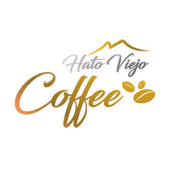This trip back to the Dominican Republic was our first since the pandemic began, our first since I began Hato Viejo. While visiting with family was important and wonderful, a big part of this trip was visiting- for the first time in person- our coffee supplier, The Belarminio Ramirez E Hijos Farm, in Jarabacoa.
The day we arrived in the DR, we flew into Santiago de los Caballeros (usually shortened to just Santiago,) the second largest city in the country, and capital of Santiago Province. The Christmas holiday season is a big deal in the DR, and most companies close their doors for the festivities, so getting to the farm before that happened was a big priority, and we were there by 9am.
It was so exciting- to finally put faces to the names, to meet- in person- the people I’d now been speaking with by phone or email for years. For my husband and our kids, and my two younger brothers, it was just really interesting. Seeing the whole process from planting the seed to harvesting the beans held their attention.
For me, though, the memories of my childhood came flooding back. The process has modernized considerably since the days when my parents had their Hato Viejo coffee farm in Moca- especially after the coffee is harvested and brought to the facility. They still pick the ripe cherries by mostly hand though, which is relatively easy for the Arabica variety, as the trees do not grow very tall, and allows them to easily harvest only the ripest coffee.
One of the things that particularly caught my interest was the classification process. My father’s farm was small, and after we harvested - the green coffee was going straight from the family farm to intermediaries, who did the classification. This time I got to see it- how the beans were divided by size, weight, and other factors- all of which affects the flavor of the cup of coffee.
I finally understood precisely why my coffee turned out so well, and why my customers raved about it to me. It’s a little like beef, actually, in that when a cow is slaughtered, it is cut up into many pieces, each of which are priced according to flavor and tenderness. Filet mignon and ground beef both come from the same cow, but anyone who eats them can tell the difference. Coffee is much the same. The cup in your hand is a direct reflection of the work this farm does to make sure beans selected are the very best. Industry standards, especially in exports to the USA, are high.
I also got to see, for the first time I can remember at least, a Robusta variety coffee plant. While most Dominican coffee production makes use of the Arabica variety, a small amount of the Robusta is grown for use on the national level.
We left the farm that day more than satisfied with the experience, and bursting with new knowledge. What more could I possibly have asked for? It was a great day- a fun and educational experience. My hope is to go back soon. Maybe explore the plantation side of it all on a deeper level.
